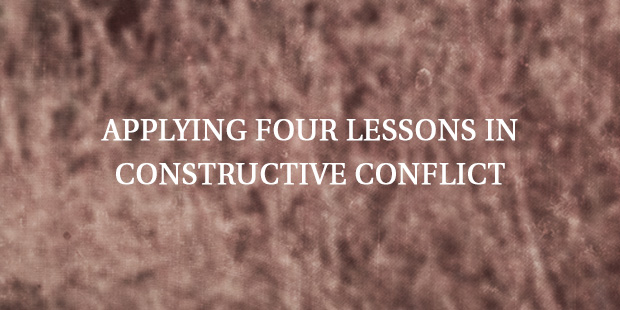
Applying Four Lessons in Constructive Conflict
Are you tired of fighting fires in your organization?
Maybe you are putting out too many fires because you are not starting them. That’s right – maybe you need to fight fire with fire. Have you considered how many fires in your church are the result of:
- False urgency being created by people’s agendas
- An atmosphere of distraction
- Lack of prioritization and preparation
- Unresolved conflict that is swept under the carpet
- Indecisiveness that propagates lingering questions
- Bottlenecked decision-making with little empowerment
Ron Ashkenas and Lisa Bodell, writing in HBR.org, think that leaders need to embrace conflict – in other words, sometimes they need to start a fire:
Overcoming the natural and often unconscious tendency to damp down conflict is tough to do – but if you’re willing to try, these four best practices can help:
Quote The Godfather. Doing this will reinforce the notion that we can disagree about ideas and strategies, but still respect and like each other — something that is often forgotten in the heat of battle.
Create challenge events. Rather than leave it to chance, schedule time with your team to question norms and change the way things are done.
Recognize employees who question the status quo. If someone pushes back or raises an uncomfortable question in a meeting, back them up rather than shut them down.
Set ground rules for conflict. Since everyone struggles with conflict to some degree, develop a few standards for how your team can manage it constructively.
In the short-term, it’s almost always easier to avoid conflict and come across as being a “nice” manager. But more often than not, being a little less nice might be the best thing for your people, your organization, and you.
Just maybe, the fires we are constantly chasing need to be replaced by a fiery, white-hot vision planted deeply in the minds and heart of our leaders and people.
Imagine if starting the right fire in each individual:
- Aligned people’s attention
- Increase everyone’s passion
- Created more capacity for fewer initiatives
- Catalyzed better communication and collaboration
- Clarified values for better decisiveness
- Gave people more problem solving authority
Realistically, great leadership will always have fires to put out. That work is never completely done. But don’t be seen as a fireFIGHTer, in part, because you’re not a fireSTARTer. By doing that, you let other people start fires and you tend to keep your firefighting gear on.
Your system needs more vision – it needs the right fires planted in more people.
Read more from Will here.

Tags: Will Mancini












